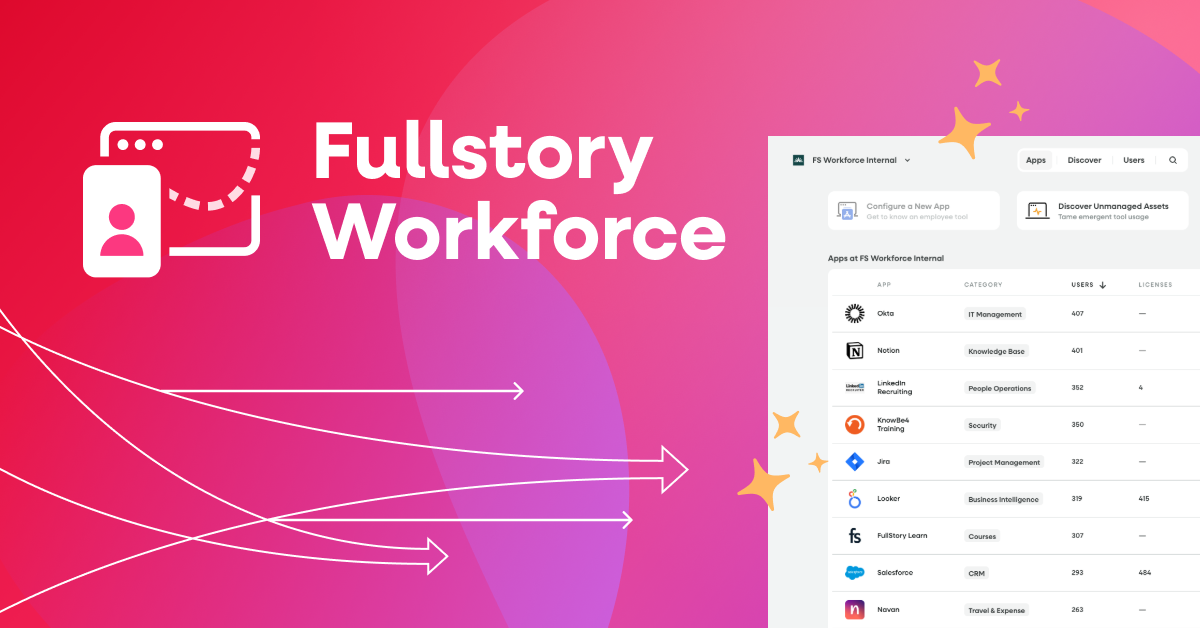Article summary: Staying ahead of arising digital customer experience trends is a crucial part of crafting a successful digital strategy. Based on research from around the digital experience space, we’ve rounded up these new and continuing digital customer experience trends to be on the lookout for in 2021.
For digital professionals, predicting and preparing for a new year is always a challenge—and 2021 is shaping up to be exceptionally unpredictable. But even with the uncertainty brought on by the ongoing pandemic, there’s one thing we can be sure of: companies that stay in tune with customers’ needs and provide an exceptional customer experience in this difficult moment will shine. Here, we explore 12 digital customer experience trends that brands should keep top of mind in 2021.
1. It's more important than ever to reassure your customers
We can’t consider what our customers will want and need in the coming year without accounting for the unpredictable effects of the ongoing pandemic. For this very reason, companies must continue to provide reassuring and informative messaging for customers and potential customers.
This messaging might include how your company is prioritizing the health, welfare, and safety of both customers and employees. It might also include information about aspects of your organization’s user experience that have changed as a result of the pandemic. These communications serve to reassure people who are spending conservatively right now, and let them know what to expect when they do spend with your company.
In a recent webinar hosted by our partners at Qualtrics, Ona Anicello, Manager of UX Research at Alaska Airlines, said:
We've done some things along the guest journey, just to make sure that every step along the way people feel safe, that they feel secure in traveling. Specifically within the booking path, we’re looking at ways that we can communicate to our guests that we do take sanitation and their safety seriously. But also to communicate that if something does go wrong or if you get sick prior to your day of travel, that we'll take care of you, that there's ways that we'll work with you to avoid any change fees and that sort of thing.
Whatever industry you’re in, it will continue to be critical in 2021 to communicate with wary customers early and often about the ways in which you are prioritizing their needs—from health precautions and cleanliness standards, to return and cancellation policies. Reassure your customers that you will protect them in this time when so many things are outside of their control.
2. Digital transformation is top-of-mind (and it needs to happen fast)
You’ve been hearing the phrase “digital transformation” for years. But as peoples’ lives become increasingly digital-first, the concept is quickly moving from buzzword to serious strategy, guiding many organizations’ short- and long-term business goals.
In a recent interview, Margaret Wise, Chief Revenue Officer at a leading digital consultancy, said:
I think of digital transformation as the effort to de-silo digital, moving from digital as a separate channel to digital as embedded across an organization … It’s critical to develop your digital strategy in line with your organization’s strategic goals. Digital transformation is enormous and you can’t bite everything off at once; you’ll always have to prioritize limited resources.
Organizations that invest heavily–and strategically–in digital transformation were three times as likely to have significantly exceeded top business goals in 2019, according to Adobe.
And the challenges and benefits of pursuing digital transformation aren’t restricted to any one industry. Read more about how digital leaders from three different industries approach strategic digital transformation in our recent three-part interview series.
Part I: Insights from a leading digital consultancy on how to do digital transformation
Part II: Insights from Moosejaw’s CTO on how organizational culture supports digital transformation
Part III: CEO at digital-first brand, Pirate Ship, on why the future of commerce is digital-or-bust
3. Cross-functional team collaboration is key to efficient remote work
In 2020, we saw massive shifts to remote work, with nearly 20 percent of the global workforce now working from home. This, paired with budget cuts at many companies, has highlighted inefficiencies in daily practices that were less evident in a traditional office environment.
According to Adobe, 53 percent of large organizations report that outdated workflows slow down their processes and stand in the way of meaningful digital transformation in 2020. Adobe provides the example of data silos as an outdated practice that inhibits progress: in an organization where stakeholders don’t share expertise, data, and resources, customer experience can’t evolve at the speed of the market.
In 2021, companies should focus on replacing outdated, overly time-consuming workflows with more automated, and therefore more cost-effective, processes. This will likely involve rethinking how teams across your organization collaborate and share information, resources, and goals.
For many companies, ironing out the wrinkles in working from home and reducing costs go hand in hand, and will require you to focus on restructuring teams, aligning on goals, and breaking down data silos.
4. Customers gravitate toward brands that are socially and environmentally conscious
Across the board, companies are competing for consumer dollars and loyalty by offering low prices, free shipping, and any number of other enticements. But smart brands are escaping this race to the bottom by offering customers something they’re willing to pay for: shared values.
With issues like climate change and social justice occupying more space in peoples’ minds, many consumers are looking for ways to align their values with their shopping habits. When given the choice between two nearly identical brands—one that upholds a particular consumer value and one that doesn’t—people choose values, even if this means paying a slightly higher price.
When it comes to eco-friendliness: 77 percent of consumers say that looking for brands that are sustainable and/or environmentally responsible is very important or moderately important to them, and 72 percent of those consumers are willing to pay a premium for that. (IBM)
And on the topic of social change: 81 percent of consumers say that their ability to trust a brand “to do what is right” is a deal breaker or deciding factor in their buying decision, and 69 percent of consumers have growing concerns about brands’ impact on society. (Edelman)
The logic behind this buying behavior is easy to see. In the eye of the consumer, shopping with a brand that supports one of their values is like killing two birds with one stone: they get the product or service they need, and they feel like they’ve contributed to a worthy cause.
Chances are that if your organization is built on a philanthropic concept (like Bombas’ sock donation for every purchase), that messaging is already part of your marketing strategy. But for other companies, there might be other initiatives you can highlight to demonstrate your values to your customers. Maybe you ship your products in 100 percent recycled packaging, or your organization has committed to a set of employee diversity goals. An organization’s principles are increasingly meaningful to shoppers, so it’s important to consider ways to be vocal about your values.
5. Storytelling and content are front and center for digital marketers
When it comes to the competitive digital advertising space, standing out from the crowd and winning consumers’ attention has been a growing challenge for brands over the past decade. As the competition for consumer attention grows fiercer, brands are finding new ways to relate to their audience and build loyalty through storytelling and content marketing.
Rather than traditional product advertising, many digital marketers are focusing their efforts on building emotional connections and relationships with their audience. This trend of marketing through storytelling isn’t a new one, but it’s only becoming more prevalent.
In an article for Common Thread Collective, Aaron Orendorff writes: “The power of content lies in entering an audience’s heart and mind through a consistent story well told; one with people, not products, at its core.”
And though the concept of storytelling and content marketing has been around for some time, many companies are still figuring out how to do it—and measure it—effectively. Digital Marketing Institute reports that while 86 percent of B2C companies use content marketing, only 33 percent have a documented strategy and less than half actually measure the ROI of content marketing efforts.
These numbers add up to one fact: marketers who thoughtfully document and execute on a content strategy, and then measure and iterate on that strategy, will excel in the advertising space.
Similarly, interactive marketing content is also becoming more popular as we enter 2021. This category includes any type of marketing that a user can get involved in rather than just looking at (or scrolling past). A few examples include:
Video content that appears across various channels
Quizzes that curate some kind of personalized experience or information for the user
Augmented reality ads, like a 360 degree view of a store or hotel
The bottom line? Marketing that centers humans—whether by telling a story or by involving the target audience—is the most direct path to a customer’s heart in 2021.
6. Loyalty and retention marketing leap ahead
Increased competition. Decreased customer confidence. These are just some of the reasons why finding new audiences and first-time purchasers is more challenging for companies than ever. Plus, finding a new customer costs five times more than retaining an existing customer.
Heading into 2021, the most successful companies will heavily emphasize customer loyalty and retention, rather than seeking new audiences. A few examples of loyalty and retention tactics include:
Loyalty programs based on points, dollars spent, rebates, etc., or VIP programs that offer members year-round perks. Amazon Prime is perhaps the most successful example of a VIP program; members get access to Amazon’s streaming service, free two-day shipping on many items, and exclusive discounts.
Add value to your product or service by offering customers a community element, like a customer forum or even a customer advisory board for your most valued customers. Peloton, for example, offers users the ability to join riding communities that incentivize them to continue renewing their monthly membership.
Offering an onboarding program for new users/customers; if they better understand the value of your product, they’ll be more likely to continue using it.
Emphasizing your company’s values across customer-facing touch points—as mentioned earlier, people increasingly choose to purchase from brands that align with their own beliefs.
7. Personalization in digital commerce is no longer just a nice-to-have
The ability to deliver personalized user and shopper experiences is rapidly becoming table stakes for companies. From marketing emails to dynamic advertisements, customers don’t just want a personalized online shopping experience, they expect it. According to data from Epsilon, 80 percent of shoppers are more likely to buy from a company that offers personalized experiences.
While companies understand this expectation, many still struggle to offer relevant personalized experiences.
Effective personalization is difficult: it requires data, resources, and a thoughtful strategy. That’s a tall order, but research shows it’s worthwhile:
49 percent of consumers say that they will likely become repeat buyers after a personalized shopping experience with a particular company, according to our partners at Segment.
And marketers report seeing an average increase of 20 percent in sales when offering personalized experiences, per data from Monetate.
Here are two things every company should consider before investing in personalization:
Customer data is the key to successful personalization. After all, you can’t build a custom experience for someone you know nothing about. So ask yourself: Do we have a sufficient amount of customer data to effectively offer personalized experiences? Data about your customers—who they are, where they are, how they behave online—is the foundation for audience segmentation, the first step to personalized experiences
Before launching an ambitious personalization push at your organization, make sure that your team has the resources—both the appropriate technology and the time—to manage it.
You’ll also want to make sure you have a process in place for validating your ideas and efforts around personalization. How will you measure success? How will you iterate on your efforts? A thoughtful personalization strategy should become more automated over time, but requires plenty of legwork up front. Who will be responsible for monitoring your personalization strategy?
8. Artificial Intelligence (AI)-powered chatbots deliver better digital customer support
In recent years, more and more companies have started to use chatbots for customer support. This trend, like many others, has accelerated in 2020 due to the pandemic. With more people turning to the internet to complete previously in-person tasks (like shopping and working), the need for online support is increasing proportionally.
In this new online-all-the-time reality, the benefits of chatbot support are undeniable.
On the customer side, benefits include:
Chatbots are available 24 hours a day and can provide instant responses for customers who need support outside of business hours or in different time zones, and 74 percent of customers today expect to have access to 24-hour support (Intercom)
Chatbots provide automated help that many customers find desirable: about 40 percent of customers say they actually prefer to communicate with a chatbot over a person when shopping online (Tidio)
And on the company’s side:
Chatbots can answer up to 80 percent of standard user questions (IBM), freeing up support agents to focus on more complex problems or projects
Chatbots can act as an inbound channel for sales, and 67 percent of business leaders say bots have increased their sales (Intercom)
Finally, chatbots save money for companies by generating quick responses, saving on headcount, and adding to overall efficiency
Of course, companies need to keep in mind that software can’t always replace human interaction. Using chatbots successfully means enabling them to enhance, rather than replace, support agents.
9. Emphasis on improving mobile experience continues
Each year, actions taken on mobile devices—whether shopping, working, or researching—are trending upward. The average adult spends nearly four hours a day on a mobile device. And in 2020, 40 percent of Black Friday sales were made from mobile devices for a revenue of $3.6 billion.
Companies can no longer afford to have a less-than-ideal mobile experience. Here are two basic-but-critical things you can do to provide a better mobile experience:
Address your page load speed: According to Google, 53 percent of mobile users will abandon a page if it takes more than three seconds to load. There’s no singular quick fix for speeding up your mobile site and / or app, but here are a few steps you can take to improve your mobile experience leading up to the holidays.
Test browsers and screen sizes: To ensure that your mobile site renders correctly across all browsers and devices, you’re going to have to do some grunt work. Use your phone to go through the checkout flow on top browsers: Safari, Chrome, Firefox, MS Edge and Opera. Do this from an iPhone, an Android, an iPad and a windows tablet. Note and address any issues.
For more on mobile-specific trends in 2021, read this post written by our partners and leading mobile app agency, Yodel Mobile → 5 key mobile trends for 2021
10. Volume of business-to-consumer communications will remain higher than usual
Since the start of the pandemic, communications from brands to their customers have been trending steadily upward. This trend began in the early days of the pandemic as brands sought to keep customers informed about store closures, new programs like curbside pickup and contactless delivery, and the reassuring messaging that we touched on previously.
But as time went on and people adjusted to new shopping norms, the higher levels of business-to-customer communication didn’t decline. Brands continued their efforts to reach consumers directly through email, text messages, and push notifications as they fought to retain their customer base.
And this trend is expected to continue: according to a Forrester report, marketing message volume will increase by as much as 40 percent in 2021. With more messages landing in customers’ inboxes, companies will need to be creative and intentional to earn and maintain their audience’s attention.
11. A seamless customer journey is critical, and analytics can help
Web and app analytics tools are now widely available, and nearly all digital companies use them in some capacity. In many cases, different teams are using different analytics tools to measure various customer behaviors This often creates data silos and makes it difficult to understand the whole digital customer experience.
Organizations that have a complete picture of their customers’ digital experience generally have a higher digital experience maturity level—which is directly linked to higher revenue and overall organizational success.
According to Fullstory’s original research on digital experience maturity, 45 percent of more mature digital organizations report having a complete picture of their customers’ digital experience, while only 10 percent of less mature organizations report the same.
That complete DX picture—that is, understanding both what people do on your site and why they do it—is the foundation of a successful digital strategy.
To achieve this, organizations need the ability to 1) ingest complete, unsampled data and 2) the means to analyze quantitative and qualitative data together.
Organizations can bring together these critical pieces of the puzzle with a thoughtfully curated and highly integrated tech stack that collects and analyzes the necessary customer data. According to our research, organizations that report delivering an ideal digital experience more often are 223% more likely to report that they have a very integrated technology stack than their less successful counterparts.
How Fullstory helps organizations understand digital experience
Session Replay, a powerful qualitative tool, has always been a fundamental Fullstory feature. However, the real power of Fullstory is in its digital interaction data engine. This data can be used to recreate a user’s experience—as with session replay—but it can also be used for quantitative analysis.
Over the past few months, we’ve released a set of analysis-focused features, including Dashboards, Metrics, Defined Events, and Funnels. These features give teams the ability to zoom out and view their customer data in the context of specific business goals; teams can now do the majority of their analysis without leaving the Fullstory platform.
This, combined with Fullstory’s growing technology partner ecosystem, makes Fullstory the ideal tool for breaking down data silos and getting a complete picture of your customers’ digital experience in a single platform.
12. Responsible, transparent customer data management is a non-negotiable
From geolocation and device preference to past purchase behavior, businesses rely on customer data to help them deliver better, more personalized digital experiences. And people are increasingly aware—and increasingly wary—of that fact. This heightened concern over customer data collection and use is due, in part, to high profile data management failures in recent years, from misuse to large-scale breaches.
To gather this valuable data, a company needs to first earn its customers’ trust: according to PwC, 88 percent of US consumers say that how much they trust a company determines how much they’re willing to share personal information.
Responsible data practices also help to create trust and boost customer loyalty. Salesforce reports that 78 percent of people say they’re more loyal to companies that are transparent about how their data is used.
So how does a company ensure that it’s managing data responsibly? Put broadly, organizations need to implement a data governance strategy. According to Segment, a data governance strategy is a set of principles around what data an organization will collect, how they’ll collect it, and how they will ensure it’s safe from unauthorized access.
Fullstory’s proprietary masking technology, Private by Default, lets Fullstory customers get all the benefits of Session Replay while maintaining their data governance strategies. Private by Default ensures that no text input by an online user is recorded unless explicitly allow-listed– eliminating the risk of collecting unwanted end-user data for Fullstory customers.
Nearly all of these trends can be tied into one essential concept: customer experience is king, and successful organizations will focus on continually improving digital customer experience in 2021.
One in three customers say they will stop doing business with a company after just one bad experience—and when your competitors are just a click away, your digital customer experience needs to be seamless.
Data shows that organizations understand that digital customer experience will increasingly act as a competitive differentiator: according to Gartner, 81 percent of marketers in 2020 expected to compete almost solely on the basis of CX.
These stats make one thing clear: Customer experience is going to be a key battleground for all digital companies in 2021.
Ready to start strategically improving your digital customer experience to stay ahead of the trends? Get a Fullstory demo today.



